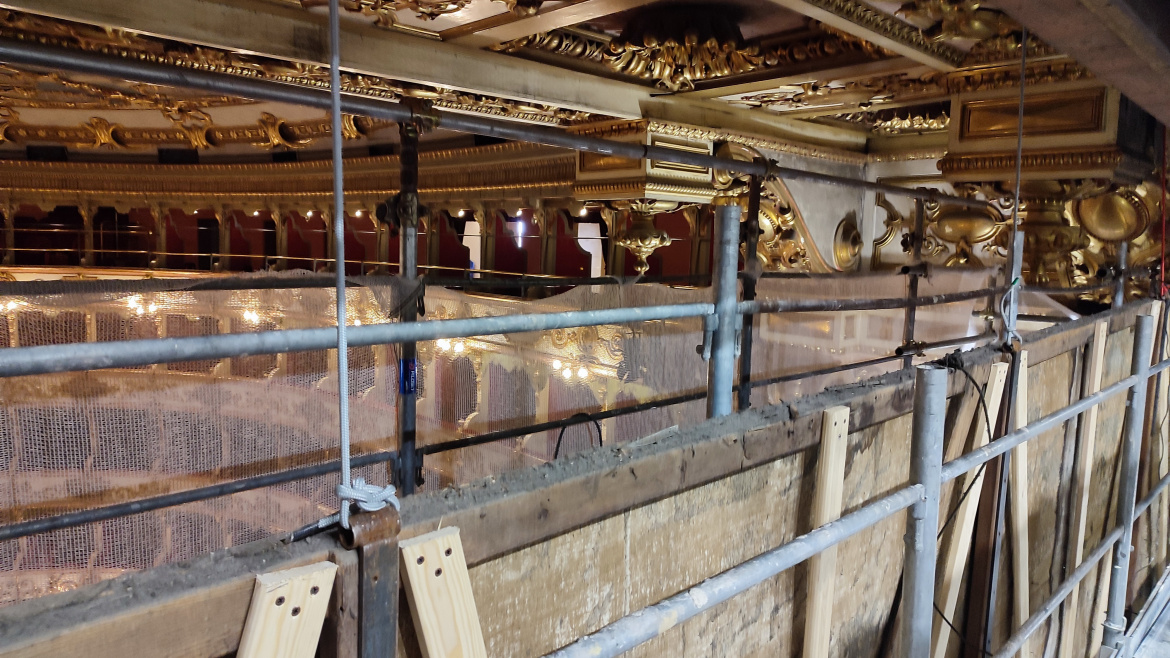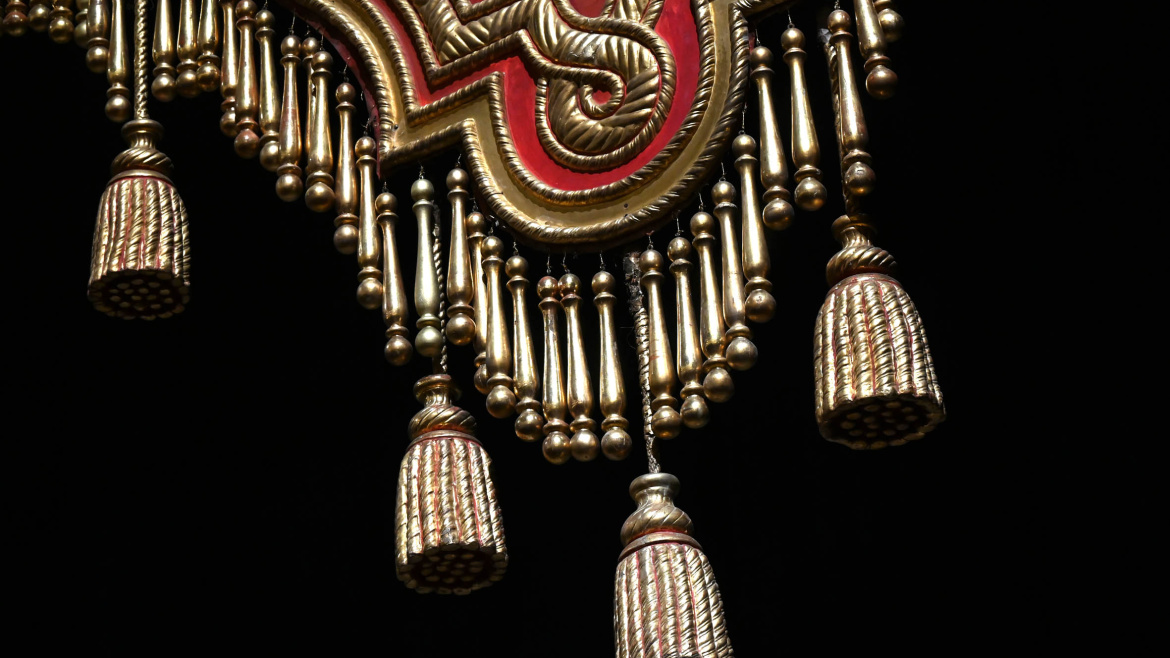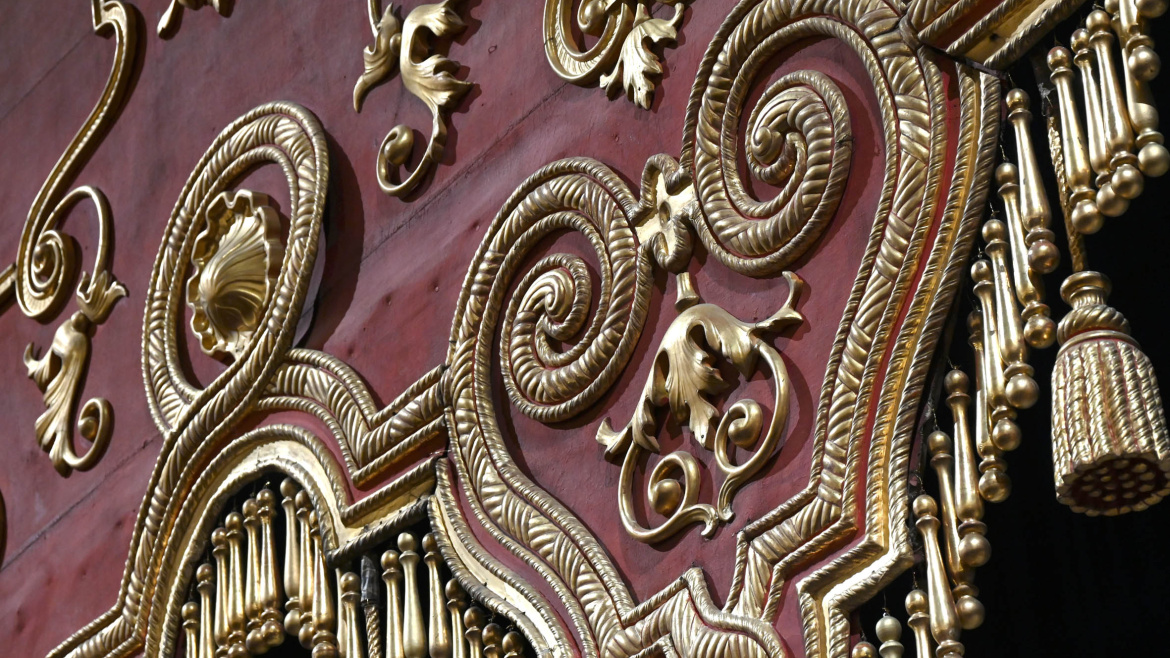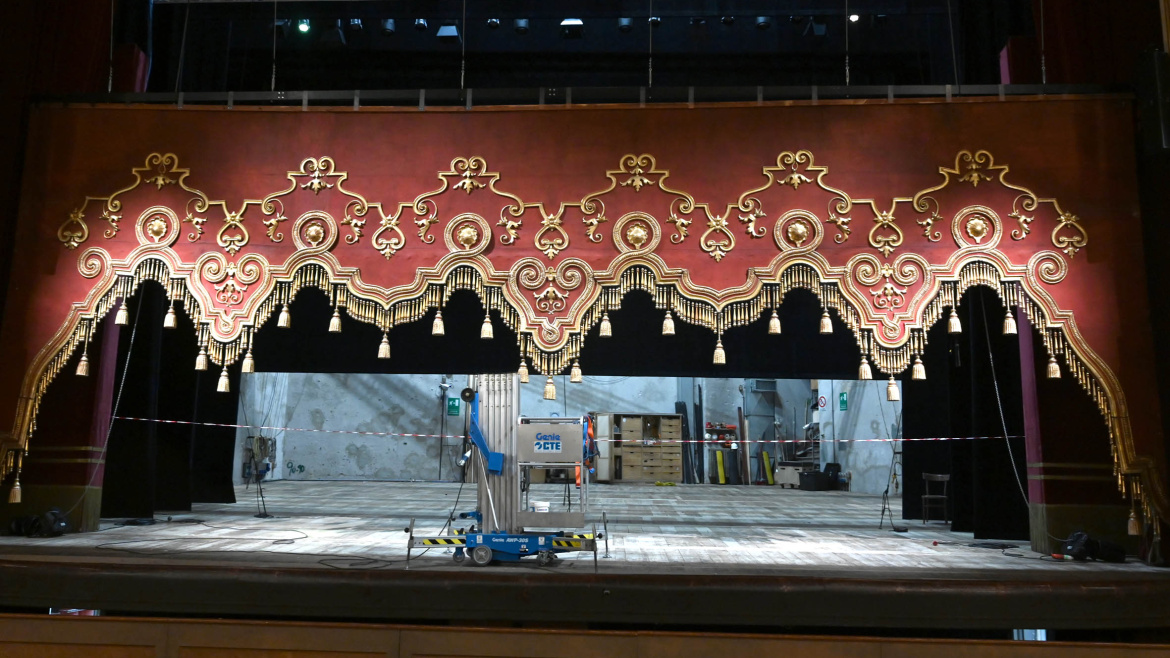The Teatro Grande underwent extensive restoration and rebuilding over the centuries, as is common for important monuments that require continuous intervention. The final aspect and layout of the Theater were achieved in the 1930s while the subsequent works were merely limited to preservation projects which did not alter the building structure. One of the main reasons for this fragility lies in how the rooms were designed: the choice of materials that are not very resistant to aging such as papier-mâché, painted wood, plaster, and canvas requires continuous care and careful precautions to prevent fires.
Notwithstanding the numerous completed projects, there is still a waitlist of to-dos. Preserving this wonderful city building – not only a theater, but also a national monument – is a target not to miss.
THE RESTORATION OF THE RIDOTTO
Started in 2013, the restoration of the historic Ridotto of the Teatro Grande was divided into three major lots, the last of which began in January 2017 and was completed at the end of August 2019. The subject of this final tranche was the completion of the restoration of the wall paintings and stucco.In continuous discussion with the Brescia Soprintendenza Archeologia, Belle Arti e Paesaggio, work continued on the recovery of the original 18th-century palette, stripping the surfaces of Tagliaferri’s layers of color with careful descialbo. In the loggia, painted wall and ceiling surfaces that were no longer visible after postwar painting and maintenance were brought back to light. All the frescoed surfaces, after the descialbo phase, were in an advanced state of deterioration, so the subsequent phases of consolidation, cleaning and plastering of the gaps proved to be very articulate and complex.
An important intervention, therefore, that the Teatro Grande Foundation shared step by step with the Accademia Santa Giulia, which was entrusted with the entire project thanks to a framework agreement signed with Gruppo Foppa. Conviction of both prestigious city realities was from the beginning the desire that the Ridotto could also be transformed into a training space for young restorers, and so it was: the students of the fourth and fifth years of the Restoration course worked in a real “worksite school”, guided in the practical-methodological phases by Prof. Elisa Pedretti and Prof. Alberto Fontanini, with tutors Maria Grazia Marchesini and Laura Cotelli.
The restoration of the Ridotto was completed with two other valuable minor interventions: the recovery of the balustrades of the first floor and the recovery of the doors of the Cafe del Teatro Grande.
At the end of the works, there are about 1000 square meters of surface recovered with an extraordinary result that finally returns to its ancient splendor one of the artistic wonders of the city, among the few Italian testimonies of Venetian Rococo painting applied to a theatrical structure.
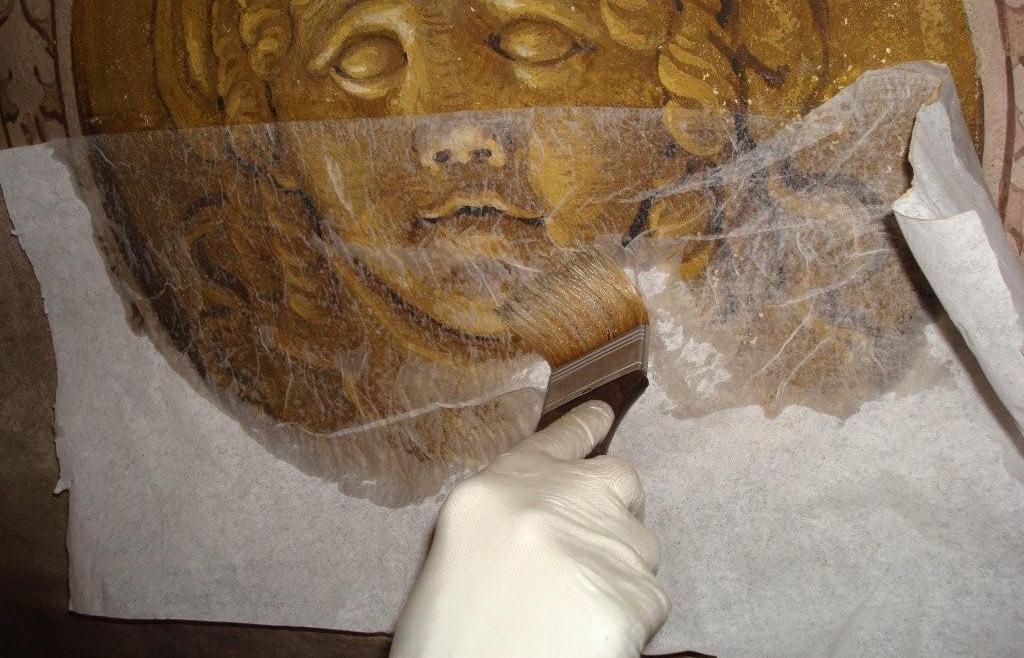
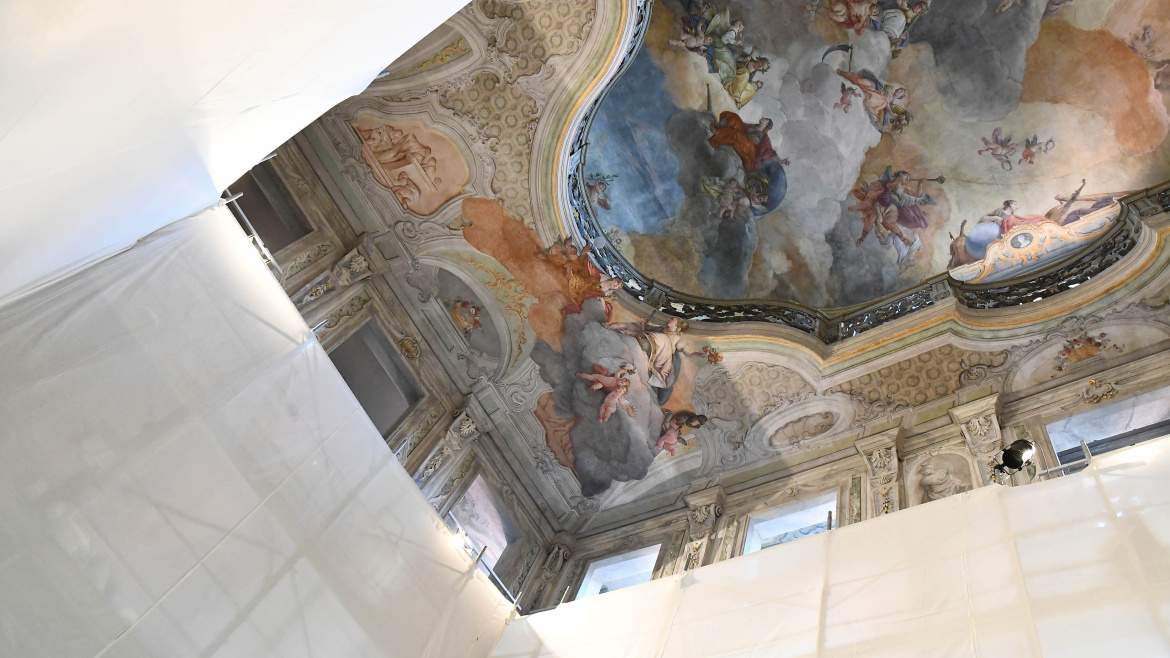
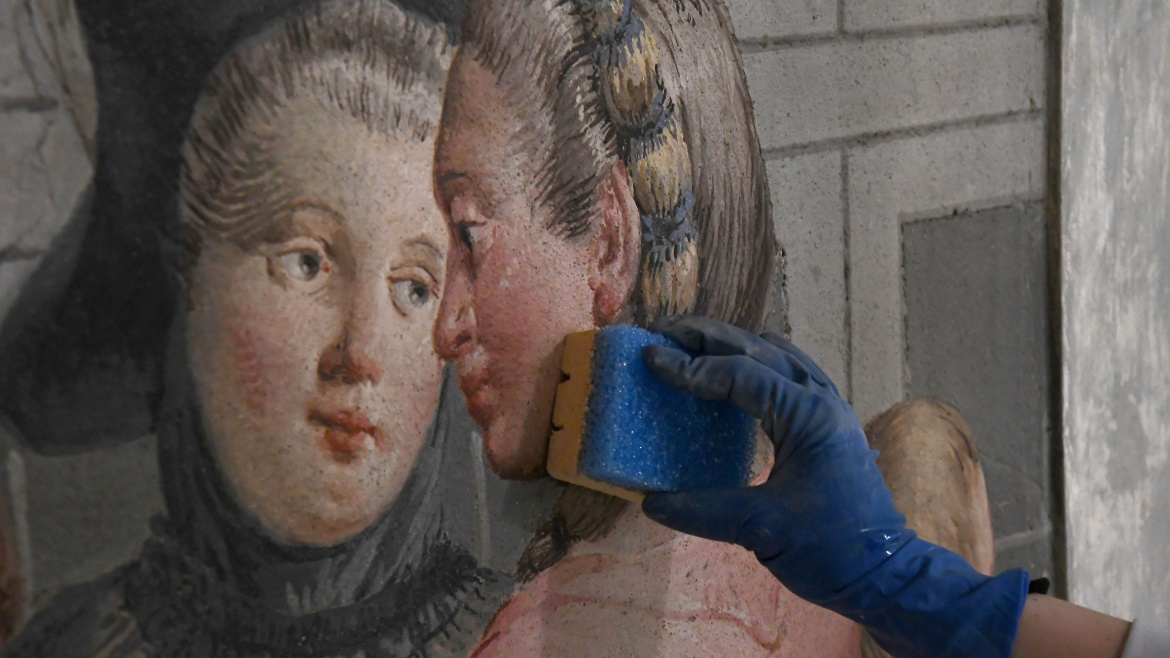
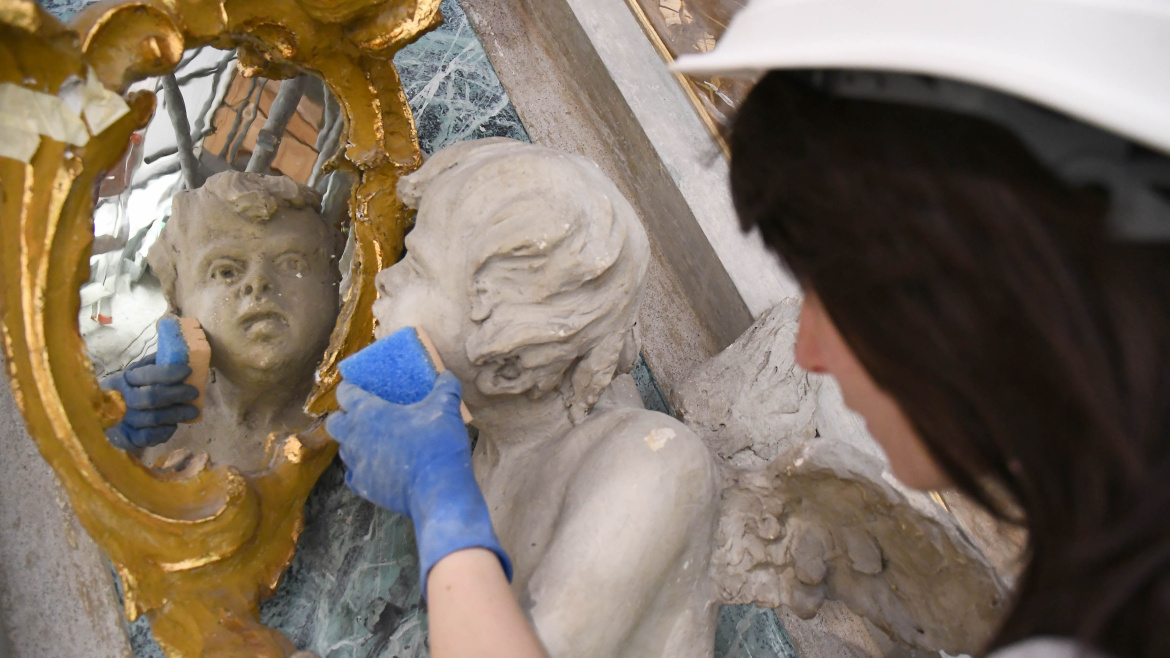
THE RESTORATION OF THE SALA DELLE STATUE
During summer 2022, the Teatro Grande Foundation began the major restoration of the Sala delle Statue, which involved both the lower portion of the entrance hall to the theatre - below the balustrade on which the sixteen statues that give the hall its name rest - and the monumental vaulted ceiling.The work site uncovered some interesting discoveries on the ceiling of the Hall, which led the Foundation to start a more important restoration campaign that was completed in the summer of 2024, also carried out with the important support of Beretta Industrie s.p.a.
Thanks to the work carried out, about 1,000 square metres of surfaces were brought back to light after more than one hundred years, of which 500 square metres related to the restoration of the vault and the same amount to the recovery of the original finish of the lower portion of the Hall characterised by the colonnade and stucco decorations dating back to the late 19th century. Further investigations on the intrados of the vault and stratigraphic studies revealed a pictorial layer of considerable historical and artistic interest.
Having heard the opinion of the Superintendency of Archaeology, Fine Arts and Landscape for the provinces of Bergamo and Brescia, the Teatro Grande Foundation decided to submit an integration to the original restoration project with the aim of recovering the entire painted surface of the vault. During the work, maintenance work was also carried out on the majestic Murano glass chandelier in the Sala delle Statue and on the historical cast iron radiators in the vestibule connecting with the Ridotto of the Theatre.
Lastly, thanks to the collaboration with FLOS, the Sala delle Statue was equipped with a new lighting system to highlight the extraordinary frescoed vault and make the original volume of this entrance space perceptible today.
The Teatro Grande Foundation entrusted the restoration work to the Marchetti and Fontanini company with the support, in the initial phase, of Arch. Ilaria Volta. The entire restoration was supervised by the Superintendency of Archaeology, Fine Arts and Landscape for the provinces of Bergamo and Brescia, which, through periodic comparisons and inspections, shared its objectives and working methods with the Foundation.
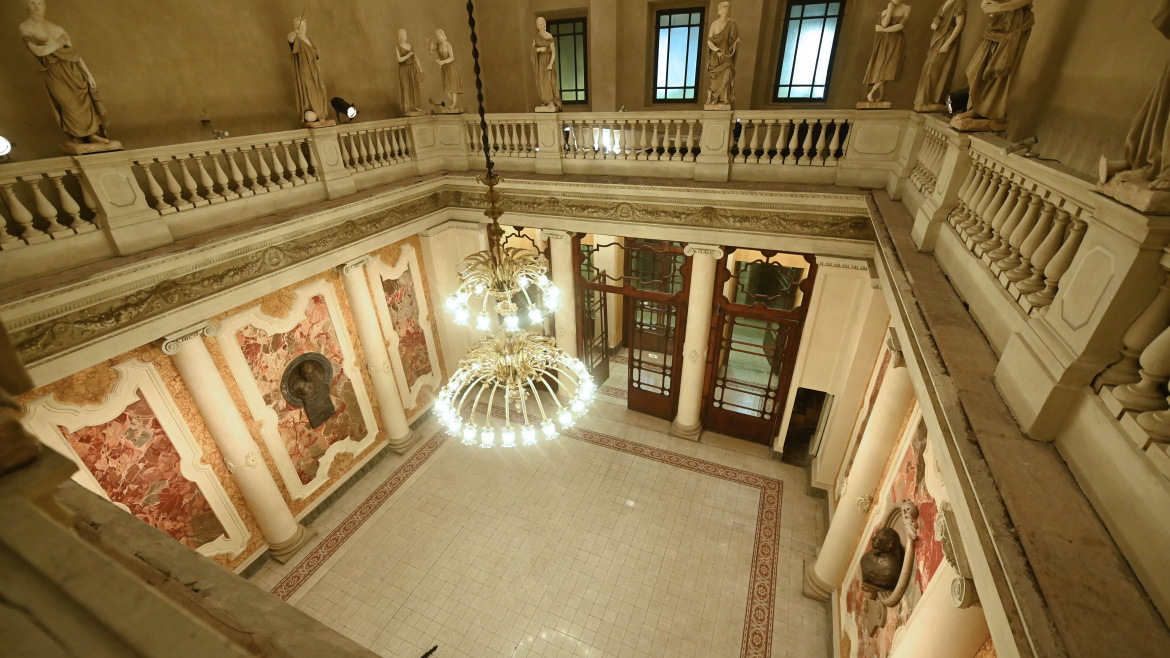
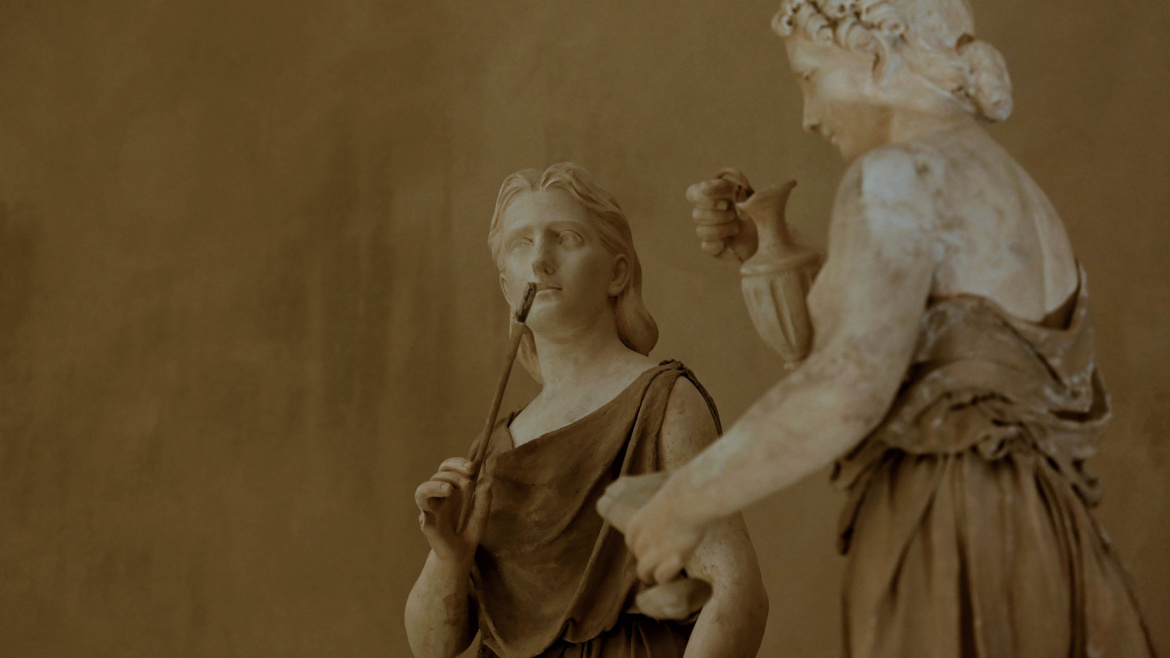
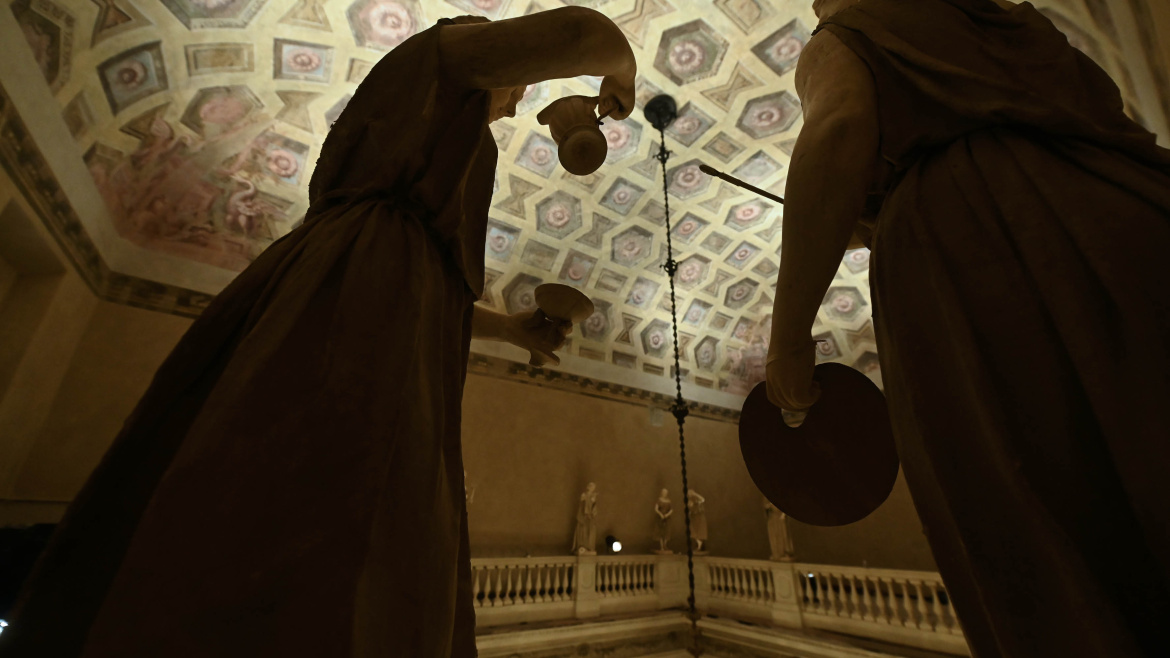
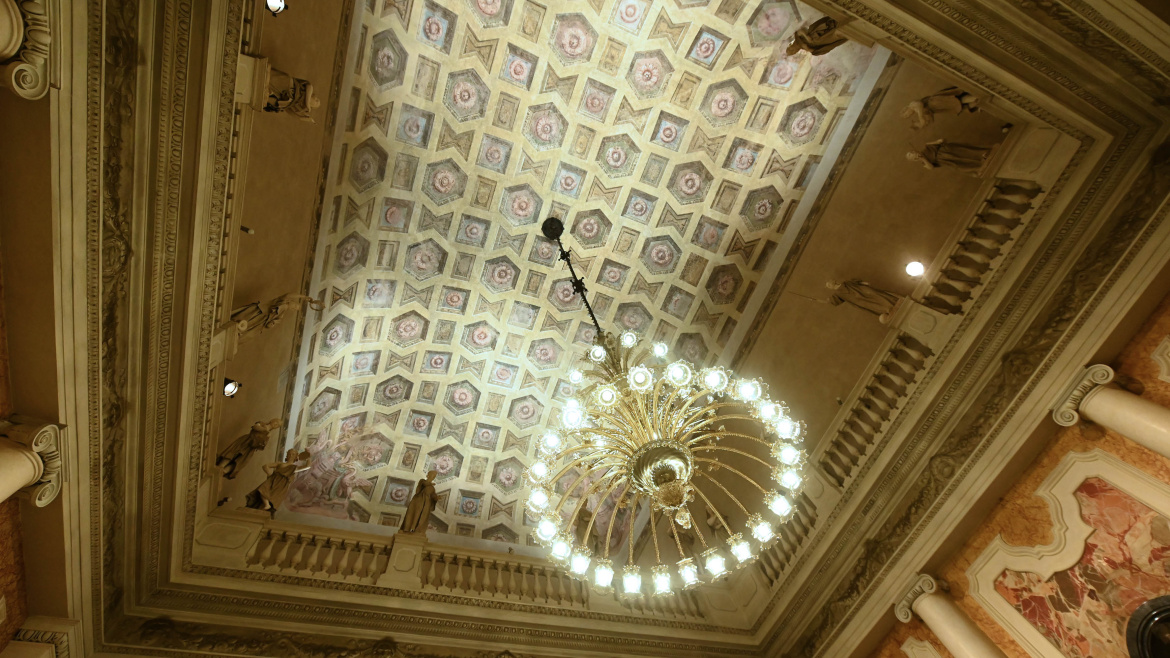
THE RESTORATION OF THE ARMED HARLEQUIN
During summer of 2024, on the occasion of the summer interruption of performance activities on the stage, the Foundation dedicated itself to the restoration of the armed harlequin in the Sala Grande, part of the Sala's stage arch, which was previously fixed and now has a movement system that allows it to be periodically serviced.The harlequin, dating back to the 19th century and made of a linen cloth smoothed with chalk and rabbit glue and then painted bright burgundy red, supports a system of gilded plaster and papier-mâché decorations, poplar wood pendants and papier-mâché tassels, weighing a total of about 400 kg.
Its direct attachment to the proscenium, which probably took place during the 20th century, had no longer allowed for proper maintenance of the entire structure, which had deteriorated profoundly over the years, leading to the sagging of the fabric, the breaking of some seams, the loss of numerous pendants and the crumbling of some papier-mâché elements, as well as the detachment of the surface gilding.
In order to guarantee the integrity and safety of the Harlequin, preparatory to the necessary handling for the continuation of the restoration, the first phase of the intervention involved reinforcing the wooden structural frame by installing a system of diagonal elements in pine wood, the same essence as the original structure.
The work then continued with a major cleaning operation using brushes, vacuum cleaners and silicone sponges, surface-active products in solution with demineralised water and synthetic salts with the interposition of Japanese paper so as not to damage the original pictorial film during the plugging operation. After a pre-consolidation of the paint film, carried out using funore algae in an aqueous solution, the cortical consolidation of the surface of the canvas and the subsequent filling of the gaps in the paint layer was carried out, followed by a mimetic reintegration of the gaps in the paint layers using watercolour paints in veils in order to reconstitute the chromatic fabric in correspondence of the abrasions and gore distributed on the surface of the fabric.
The plaster and papier-mâché decorations, reworked at a later date, were not consistent with the original ones and where possible some portions of the original decorations, preserved by the Foundation over the years, were recovered. Some missing portions, however, were reconstructed using cellulose pulp and attached to the surviving portions using acrylic glues: a tissue was also inserted at the most delicate joints to ensure their connection.
In order to minimise the impact of the gaps in the gilded surfaces and to maintain a conservative approach, gilding waxes of a slightly cooler gold colour than that of the original gold leaf were used as a filler, so that an expert eye could perceive the legibility of the intervention, ensuring a homogeneous visual impact.
The papier-mâché and rope tassels were dismantled, cleaned, restored using the same method and re-hung to the wooden structure behind with gold thread. The only missing tassel was reconstructed by the restorers using a silicone rubber mould modelled on the existing one.
The 300 gilded pendants hanging from the lower end of the harlequin were also dismantled and carefully arranged on worktops so that they could be cleaned, polished and restored; the same waxes as the papier-mâché decorations were used for the gilding gaps and for the new pendants - made on a lathe from poplar wood.
As a last step, the project included the installation of a manual handling system consisting of a winch and six pulleys that will allow the element to be maintained in the years to come without the need for scaffolding.
The Fondazione del Teatro Grande entrusted the work of restoring the 19th-century harlequin to the company Lithos srl of Venice and the mechanics for the handling to the company Decima srl of Padua. Studio Berlucchi of Brescia was responsible for the design and supervision of the work.
